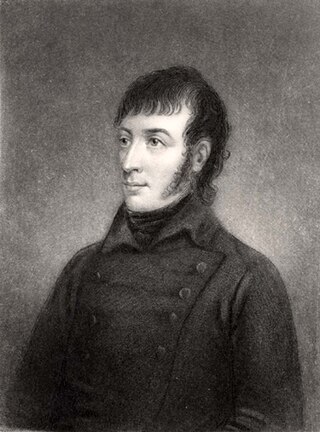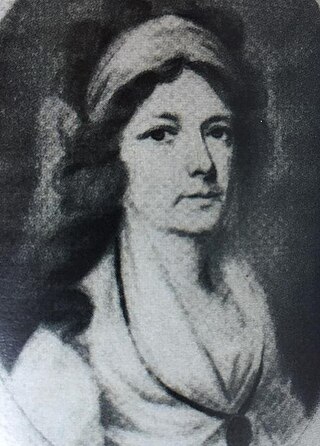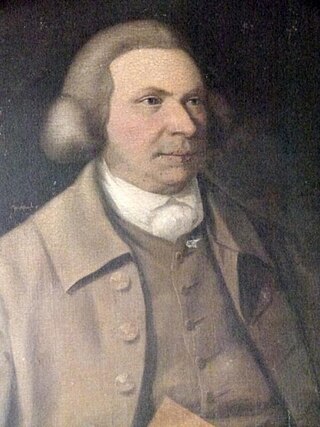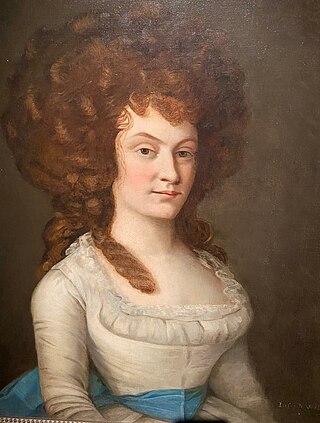
The Belfast Charitable Society, founded in 1752, is Belfast's oldest charitable organisation. It continues its philanthropic work from Clifton House which the society opened, originally as the town's poor house and infirmary, in 1774.

The Belfast Charitable Society, founded in 1752, is Belfast's oldest charitable organisation. It continues its philanthropic work from Clifton House which the society opened, originally as the town's poor house and infirmary, in 1774.
In 1752 a group of Belfast's leading merchants [1] agreed that "a poor-house and hospital are greatly wanted in Belfast for the support of vast numbers of real objects of charity in this parish, for the employment of idle beggars who crowd to it from all parts of the North, and for the reception of infirm and diseased poor". [2] [3] [4] The growth of the town's port and the textile industry had been drawing in poor, often destitute, labourers and their families, from the surrounding districts. The town's burgesses, the exclusive nominees of the Earls (later Marquesses), of Donegall, had made little or no provision to alleviate their frequent and chronic distress. [1]
The society raised money through a lottery scheme and subscription and, following formal recognition by act of Parliament, [5] opened the doors of Clifton House in 1774. Erected on land donated by Arthur Chichester, the first Marquess of Donegall on the northern edge of the town, it combined 36 person poorhouse and 24 bed infirmary.
Although it was not an issue for the society, in 1786 members were divided by the attempt of two of the charity's "founding fathers", Waddell Cunningham and Thomas Greg, [1] to float a Belfast slave-trading company. [6] The partners owned a sugar estate on the island of Dominica, as did the physician to the Poor House, Dr William Haliday. [7] The visit of the celebrated escaped slave and author, Olaudah Equiano in 1791 capped the success of the abolitionist opposition in the town, led by another of the Society's principal subscribers, Thomas McCabe. [8]
That same year, with fellow subscribers and abolitionists, Dr William Drennan, John Campbell White, William Tennant, Robert Simms and Samuel Neilson, McCabe formed the Society of United Irishmen. Proclaiming the union of Protestant, Catholic and Dissenter it sought the overthrow of Ireland's Anglican Ascendancy (represented in Belfast by prerogatives of Lord Donegall) and the establishment in Dublin of a representative government. The resulting association of the Charitable Society with political "subversion", emboldened the government to requisition Clifden House during the 1798 rebellion as a military barracks. Society did not to recover use of the building until 1800. [9]
As a visiting physician to the poor house, in 1782 Drennan had trialled smallpox variolation, the practice of inoculating the skin of healthy people with smallpox to prevent a more serious case of the disease. [10] When in 1800, the Poor House quickly filled again to full capacity, the Society permitted Haliday to conduct trial smallpox vaccination (Edward Jenner's much safer practice of using cowpox) on the Poor House children, provided the consent of parents was obtained. [11]
In 1827, following a visit to Belfast by the social reformer Elizabeth Fry, Mary Ann McCracken (sister to the executed rebel leader, Henry Joy McCracken) formed the Ladies Committee of the Belfast Charitable Society. Thanks to the efforts of the committee, and over objections of more conservative subscribers to the society, a school and nursery were set up for the poorhouse children. McCracken insisted on teachers of high quality and special ability and on play hours in which children would have free use of their time. She and the committee also established a system of industrial apprenticeships. [12]
The exponential growth in Victorian Belfast led to the foundation of other philanthropic bodies who also sought to address disadvantage and by 1882 the last child had left the Poor House. Through the 20th century Clifton House was a residential and nursing home. After the Belfast Charitable Society celebrated its 250th anniversary in 2002, it decided to build a new nursing home at nearby Carlisle Circus. This allowed for a redevelopment of Clifton House. The historic buildings now include a residential home and sheltered accommodation apartments (operated by Radius Housing) and a heritage and conference centre which the Society operates as a social enterprise. [13]

Marquess of Donegall is a title in the Peerage of Ireland held by the head of the Chichester family, originally from Devon, England. Sir John Chichester sat as a Member of Parliament and was High Sheriff of Devon in 1557. One of his sons, Sir Arthur Chichester, was Lord Deputy of Ireland from 1605 to 1616. In 1613, he was raised to the Peerage of Ireland as Baron Chichester, of Belfast in County Antrim. He died childless in 1625 when the barony became extinct.

George Augustus Chichester, 2nd Marquess of Donegall KP, PC (Ire), styled Viscount Chichester until 1791 and Earl of Belfast from 1791 to 1799, was an Anglo-Irish nobleman and politician.

Henry Joy McCracken was an Irish republican, a leading member of the Society of the United Irishmen and a commander of their forces in the field in the Rebellion of 1798. In pursuit of an independent and democratic Irish republic, he sought to ally the disaffected Presbyterians organised in the Society with the Catholic Defenders, and in 1798 to lead their combined forces in Antrim against the British Crown. Following the defeat and dispersal of the rebels under his command, McCracken was court-martialled and executed in Belfast.

Belfast Castle is a mansion located in Cave Hill Country Park in Belfast, Northern Ireland, in a prominent position 400 feet (120 m) above sea level. Its location provides unobstructed views over the City of Belfast and Belfast Lough. There have been several different structures called 'Belfast Castle' over the centuries, located on different sites. The current 'castle' is a Victorian structure, built between 1867 and 1870 on the slopes of Cave Hill, and is listed as being Grade B+. The main entrance into the Belfast Castle Demesne is now where Innisfayle Park meets Downview Park West, just off the Antrim Road. The original main entrance into the current demesne was formerly on the Antrim Road itself, where Strathmore Park now meets the Antrim Road.

William Drennan was an Irish physician and writer who moved the formation in Belfast and Dublin of the Society of United Irishmen. He was the author of the Society's original "test" which, in the cause of representative government, committed "Irishmen of every religious persuasion" to a "brotherhood of affection". Drennan had been active in the Irish Volunteer movement and achieved renown with addresses to the public as his "fellow slaves" and to the British Viceroy urging "full and final" Catholic emancipation. After the suppression of the 1798 Rebellion, he sought to advance democratic reform through his continued journalism and through education. With other United Irish veterans, Drennan founded the Belfast [later the Royal Belfast] Academical Institution. As a poet, he is remembered for his eve-of-rebellion When Erin First Rose (1795) with its reference to Ireland as the "Emerald Isle".

Thomas Paliser Russell was a founding member, and leading organiser, of the United Irishmen marked by his radical-democratic and millenarian convictions. A member of the movement's northern executive in Belfast, and a key figure in promoting a republican alliance with the agrarian Catholic Defenders, he was arrested in advance of the risings of 1798 and held until 1802. He was executed in 1803, following Robert Emmet's aborted rising in Dublin for which he had tried, but failed, to raise support among United and Defender veterans in the north.

Mary Ann McCracken was a social activist and campaigner in Belfast, Ireland, whose extensive correspondence is cited as an important chronicle of her times. Born to a prominent liberal Presbyterian family, she combined entrepreneurship in Belfast's growing textile industry with support for the democratic programme of the United Irishmen; advocacy for women; the organising of relief and education for the poor; and, in a town that was heavily engaged in trans-Atlantic trade, a lifelong commitment to the abolition of slavery. In 2021, Belfast City Council agreed to erect a statue of Mary Ann McCracken in the grounds of Belfast City Hall.
Smithfield and Union is one of the Belfast quarters established by Belfast City Council in the 21st century. Initially designated the Smithfield Market and Library quarter, the current name was adopted in 2011. Based around the north of Belfast City Centre it extends from North Street to Frederick Street and is bounded by Royal Avenue/York Street and Carrick Hill/Millfield. It houses Belfast Central Library and two of the main daily newspapers The Irish News and The Belfast Telegraph.
Clifton Street Cemetery, Belfast, holds the graves of a number of Belfast's most distinguished figures. The cemetery, whose entrance is at Henry Place in Belfast, is cared for by Belfast City Council and can only be accessed by prior arrangement with council officials. The cemetery contains the graves of members of the United Irishmen and social reformers as well as industrialists. There are also approximately 8,000 people buried in the cemetery's poor ground.
Arthur O'Neill was an Irish harper, a virtuoso player of the Irish harp or cláirseach: he was active during the final decades of its unbroken instrumental tradition in the later 18th and very early 19th century. He was closely associated with Edward Bunting, and the Belfast Harp Society's ultimately unsuccessful attempt to preserve the instrument, attending the Belfast Harper's Assembly and serving as the Society's harp tutor until 1813. He is best known for his lively and humorous memoir, collected by Bunting, which contained many reminiscences of famous harpers and of the environment in which they played.

Clifton House is an 18th-century Grade A listed building located in Belfast, Northern Ireland. Originally built as a poor house by the Belfast Charitable Institution. Today it is houses a heritage centre alongside a residential home and sheltered accommodation apartments.
Thomas McCabe, a merchant in Belfast, was an abolitionist credited with defeating a proposal to commission ships in the town for the Middle Passage, and, with his son William Putnam McCabe, was an active member of the Society of the United Irishmen.

Captain Waddell Cunningham was an Irish merchant, prominent in the commercial and civic life of Georgian-era Belfast. As a patron of the Belfast Charitable Society and its Poor House; as a commander of the Volunteer patriot militia; and as a Presbyterian subscriber to the costs of erecting Belfast's first Catholic chapel, in a town much agitated by the American struggle for independence he was seen a friend of reform. But as a land speculator, a slaveholder in the West Indies, and an opponent of immediate Catholic Emancipation, he was at odds with the more democratic elements of the town and surrounding districts who, in the wake of the French Revolution, were to directly challenge the authority of the British Crown and of the landed Protestant Ascendancy

Martha "Matty" McTier was an advocate for women's health and education, and a supporter of democratic reform, whose correspondence with her brother William Drennan and other leading United Irishmen documents the political radicalism and tumult of late eighteenth-century Ireland.
Jane "Jenny" Greg (1749–1817) in the 1790s was an Irish republican agitator with connections to radical political circles in England. Although the extent of her activities is unclear, in suppressing the Society of United Irishmen the British commander, General Lake, described Greg as "the most violent creature possible" and as someone who had caused "very great [political] mischief" in her native Belfast.

David Manson (1726-1792) was an Irish schoolmaster who in teaching children basic literacy sought to exclude "drudgery and fear" by pioneering the use of play and peer tutoring. His methods were in varying degrees adapted by freely-instructed hedge-school masters across the north of Ireland, and were advertised to a larger British audience by Elizabeth Hamilton in her popular novel The Cottagers of Glenburnie (1808).

James MacDonnell was an Irish physician and polymath who was an active and liberal figure in the civic and political life of Belfast. He was a founding patron of institutions that have since developed as the Royal Victoria Hospital, the Royal Belfast Academical Institution and the Linen Hall Library and, beginning with the organisation of the Belfast Harpers Assembly in 1792, was a promoter of efforts to preserve and revive Irish music and the Irish language. Among some of his contemporaries his reputation suffered in 1803 as a result of his making a subscription for the arrest of his friend, the outlawed United Irishman Thomas Russell.

Cherry Crawford Hyndman (1768-1845) was the mistress of a liberal political household in Belfast, Ireland, and reputedly in the 1790s an active member of the republican Society of United Irishmen.

Robert Tennent (1765–1837) was an Irish physician, merchant and philanthropist in Belfast. Representative of a politically radical Presbyterian current in Ireland, in the years following the Acts of Union he was renowned for his confrontations with the local Tory establishment. Among the numerous civic initiatives with which he was associated, the most lasting proved to be Royal Belfast Academical Institution and what is today the Royal Victoria Hospital, Belfast.

The Belfast Harp Society (1808-1813) and its successor, the Irish Harp Society (1819-1839), were philanthropic associations formed in the town of Belfast, Ireland, for the purpose of sustaining the music and tradition of itinerant Irish harpists, and secondarily, of promoting the study of the Irish language, history, and antiquities. For its patronage, the original society drew upon a diminishing circle of veterans of the patriotic and reform politics of the 1780s and '90s, among them several unrepentant United Irishmen. In its sectarian division, Belfast became increasingly hostile to Protestant interest in distinctive Irish culture. The society reconvened as the Irish Harp Society in 1819 only as a result of a large and belated subscription raised from expatriates in India. Once that source was exhausted, the new society ceased its activity.